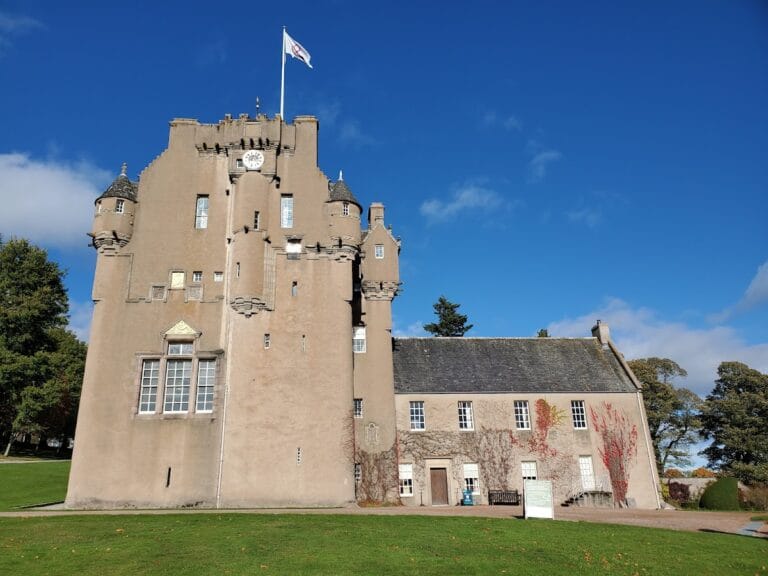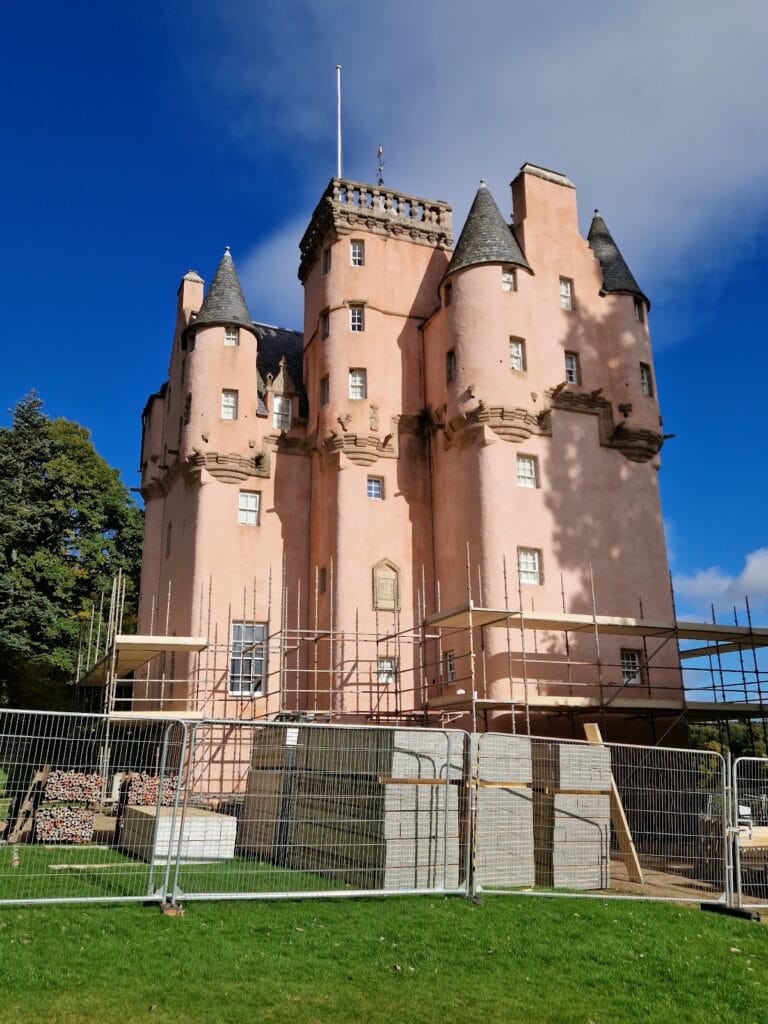Midmar Castle: A Historic Scottish Tower House in Aberdeenshire
Visitor Information
Google Rating: 4.4
Popularity: Very Low
Google Maps: View on Google Maps
Country: United Kingdom
Civilization: Unclassified
Remains: Military
History
Midmar Castle is situated near Inverurie in Scotland and was originally established by the Scottish people during the 16th century. Its location in Aberdeenshire placed it within a region of significant noble activity and political upheaval during this time.
The earliest fortified structure on the site was a medieval stone tower that belonged to the powerful Gordon family. In 1562, this original tower was destroyed in a military campaign led by Mary, Queen of Scots. This expedition targeted George Gordon, the 4th Earl of Huntly, after his rebellious actions. Following the Earl’s defeat at the Battle of Corrichie and his subsequent death, his lands were seized but ultimately returned to his heir in 1565. George Gordon of Midmar and Abergeldie, the son, began constructing a new castle between 1565 and 1575 to replace the tower lost in the conflict.
In 1594, the castle faced further damage as a result of its involvement in the Battle of Glenlivet, a notable conflict between Catholic and Protestant forces in Scotland. Several decades later, in 1728, the estate changed hands when Alexander Grant acquired it and renamed the property Grantsfield Castle. Between 1730 and the following years, the castle underwent substantial renovations, both inside and out. These alterations largely shape the building’s present interior appearance. Further maintenance work was carried out in 1840 to preserve the structure.
After 1842, Midmar Castle remained unoccupied for more than a century. Despite this lack of residents, the castle was carefully maintained, particularly the interiors from the 18th-century remodel that continued to survive intact. Restoration efforts commenced in 1977, bringing the castle back into use as a private home. In 2011, the property was sold to Tom Cross, previously the chief executive officer of Dana Petroleum, reflecting its continued status as a valued historic residence.
Remains
Midmar Castle is a substantial example of a Scottish tower house, rebuilt in the late 16th century on the footprint of the previous medieval stone tower. Under the direction of master mason and architect George Bell, the current structure was crafted to replace the violently lost predecessor, combining defensive features with domestic comfort reflective of its period. The building is officially recognized as a Category A listed site, signifying its exceptional architectural and historic value in Scotland.
Surrounding the castle is a walled garden that likely dates back to either the 16th or 17th century. This garden retains its own Category A listing, emphasizing its significance and well-preserved state. Within the garden walls are bee boles—small niches built into the stonework designed to house beehives, a traditional feature for managing bees before modern apiaries. These architectural recesses reflect the practical and agricultural uses associated with the estate over centuries.
An 18th-century sundial also stands within the garden, offering a glimpse into historical methods of timekeeping integrated into the landscape design during the castle’s period of renovation in the early 1700s. The interiors of Midmar Castle, mostly dating from this remodeling phase, have been maintained through careful restoration, preserving the character of the 18th-century domestic environment without significant alteration.
The castle’s present condition balances preservation with private use. Its original 16th-century construction elements combined with later modifications create a layered historical fabric evident throughout the building and grounds. The garden’s bee boles and sundial remain prominent features, alongside the castle’s enduring stone structures, providing a tangible link to its long history.







